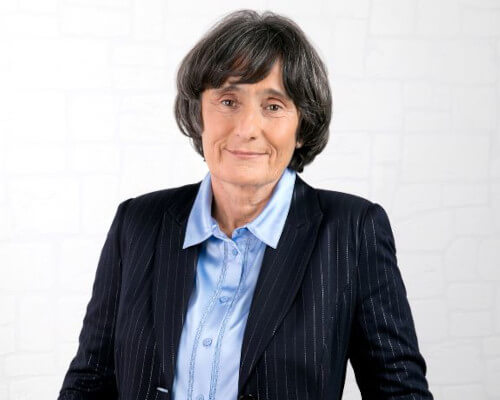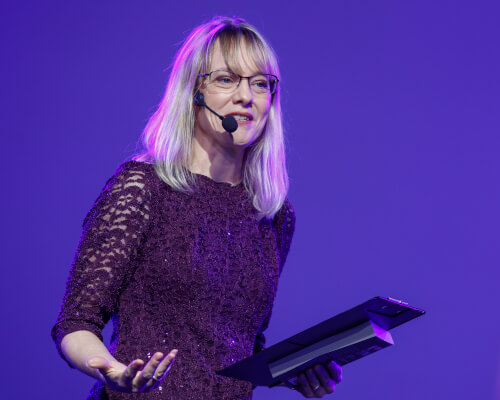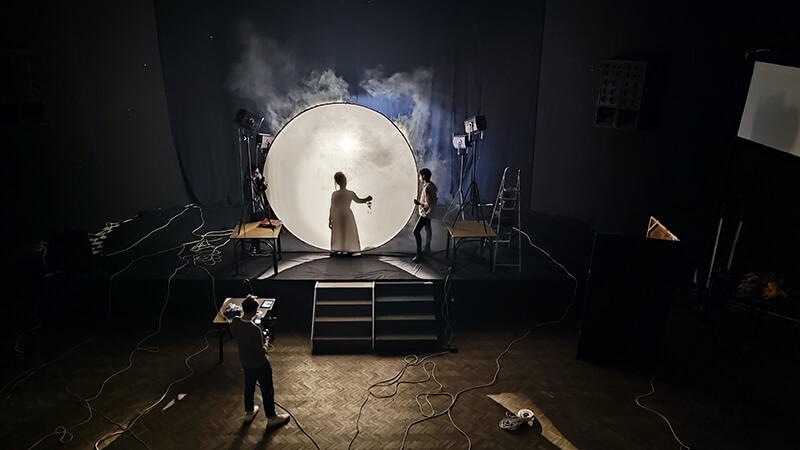
Conventionally, architects situate their work within three-dimensional space. Donika Georgieva, Miroslav Velkov, Desislava Kovacheva, and Kristina Kirilova from architectural studio Atelier 3, however, work beyond convention: their creations allow users to move through space as well as time.
The four specialize in conserving and interpreting cultural and historical sites and transforming them into accessible visitor experiences. The most recent addition to their already-impressive portfolio was the overhaul of the Treasures of Vratsa exhibition at the Regional History Museum in Vratsa. Launched in 2021 and completed with the support of the America for Bulgaria Foundation, the revamped exhibition officially opened to the public on March 29, 2023.
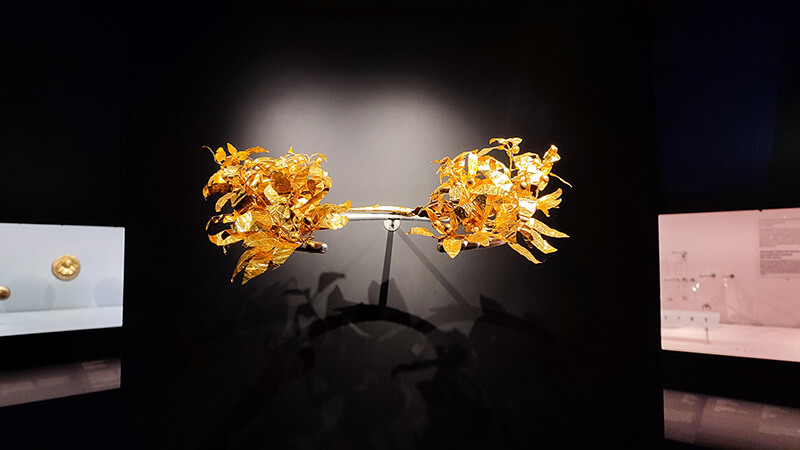
For the redesign of the Vratsa treasures exhibit, Atelier 3 drew on their experience from emblematic sites for Bulgaria: Donika and Miroslav were part of the team that brought back to life the ancient Roman stadium of Philippopolis in Plovdiv, and they also worked on the restoration of ancient and medieval sites in Sofia and Nessebar. Two signature Atelier 3 projects are the Triangular Tower of ancient Serdika in Sofia and the Ada Tepe exhibition in Krumovgrad, home to Europe’s oldest gold mine, dating back to 3000 BC. The architects developed designs for the transformation of Sveta Nedelya Square in Sofia (in partnership with Studio Paola Viganò), the Historical Hill of Chiprovtsi, a new city center in Veliko Tarnovo, and two central squares in Plovdiv.
Their work has earned them multiple professional awards and distinctions, but the most important measure of success for them is the public’s recognition. A comment by a ten-year-old visitor to the Triangular Tower of Serdika, a project they completed in 2016–17, is particularly dear to them: “It’s like going down to the past,” the visitor told them after a tour of the place.
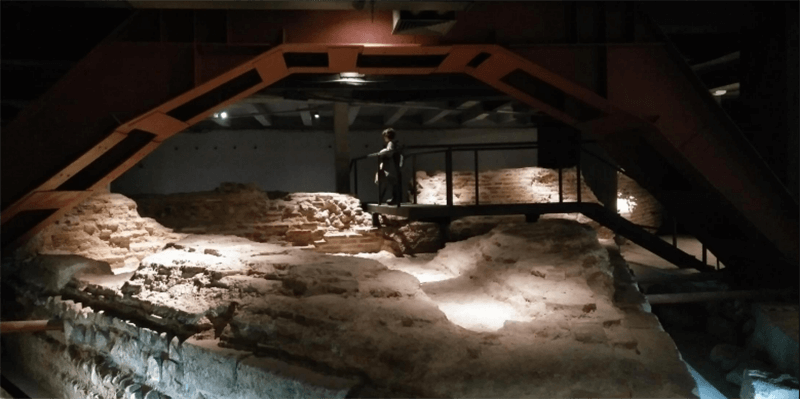
With the Treasures of Vratsa exhibition, the feeling that you have just stepped into the past is just as palpable. It was achieved not only by proximity to magnificent ornaments from Antiquity, the Middle Ages, and the Bulgarian Revival period but also by eliminating the sense of space.
“There is no space here. There is only time. Upon crossing the threshold, visitors feel a change in temperature, a sign that something is different. The hall is dark, obscuring the space it occupies and its shape. Visitors cannot perceive how big the hall is or how high the ceiling. They are immersed in the mystical universe of Time,” Donika explains.
Atelier 3’s reimagining of the space stimulates all the senses: visitors are invited to inhale the scent of a laurel tree leaf, partake in a mystical Thracian ritual through a video reenactment, and feel the fine craftsmanship that went into the making of a Revival-period dress accessory. The immersive sound panorama imperceptibly disconnects you from the present and transports you through more than 25 centuries of history. On this journey, you encounter interesting characters whose stories are told skillfully and without excessive use of special terms and chronology… and before you know it, an hour or two have passed by! (This is not an exhibit you want to see in a hurry.)
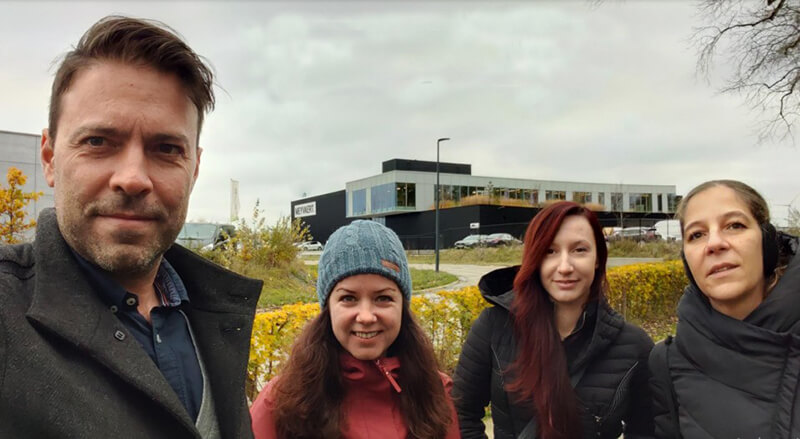
You will leave feeling that you have experienced the triumph of the unknown Thracian warrior, strutting about in silver and gold armor; the grief of his prematurely sacrificed (and lavishly clad) bride; and the vanity of medieval noble ladies.
Context was a key consideration shaping Atelier 3’s approach to the redesign of Vratsa Treasures. (“Be careful with the context” is, in fact, the studio’s professional motto.) In addition to studying the time periods in which the exhibition artifacts were created, the four worked in close consultation with historians, archeologists, restorers, and other experts at every stage of the exhibition redesign. Their idea of context also includes the spaces around the exposition. Therefore, along with the conceptual plan for the remodeled Vratsa Treasures hall, they proposed connections with the nearby Mogilanska Mound archeological complex (where key Thracian artifacts in the collection were found) and the St. Sophronius of Vratsa complex, featuring Revival-era buildings.
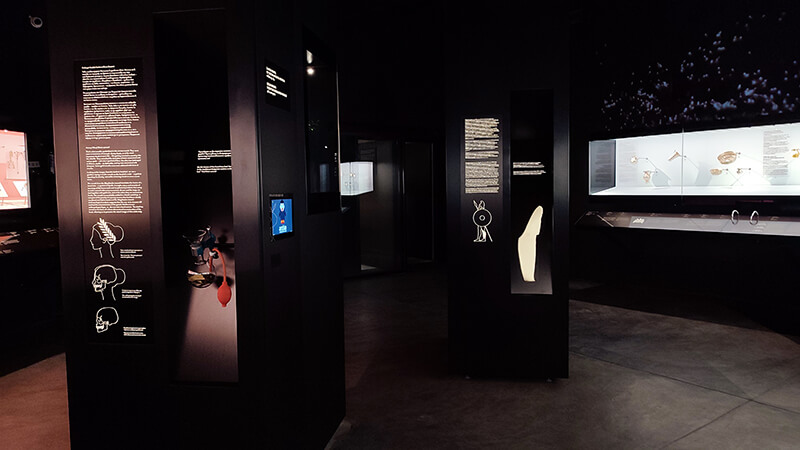
This detailed approach has been their trademark ever since the studio’s founding by Donika and Miroslav in 2013. Desislava joined the duo shortly thereafter. At first, all three of them had other main jobs and worked on joint projects only in their spare time. It wasn’t until 2018 that Atelier 3 became a full-time operation, but by 2020, their work was sufficiently well-known in Bulgaria to attract young architects with an interest in heritage conservation and interpretation. Such is the case of Kristina Kirilova, the team’s newest member, who followed their work as a student and dreamed of joining the team. Her wish came true thanks to the Vratsa project, a rite of passage in the trade for her.
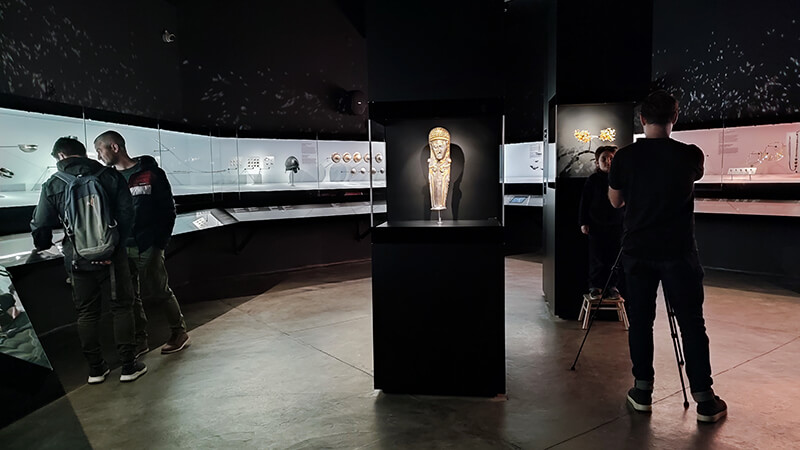
A key objective in Atelier 3’s work — and the reason they are a preferred employer for Kristina — is preserving all the layers of a place. The architects are concerned with “how something old can be combined with something new and how these layers can begin a new life that is more than the sum of the two,” Miroslav explains. Notably, none of the studio’s projects sacrifices recent history and modernity for the sake of preserving the old. On the contrary, every period’s mark is visible in their designs, and contemporary visitors are placed at the center of the experience. In the Triangular Tower of Serdika, for example, the ancient Roman ruins, the terrazzo flooring of the department store that was housed there in the twentieth century, and the steel reinforcements are all important to the exhibition’s integrity.
“We wanted to create an unusual and exciting place, gifting visitors the experience of going underneath the city,” Donika says.
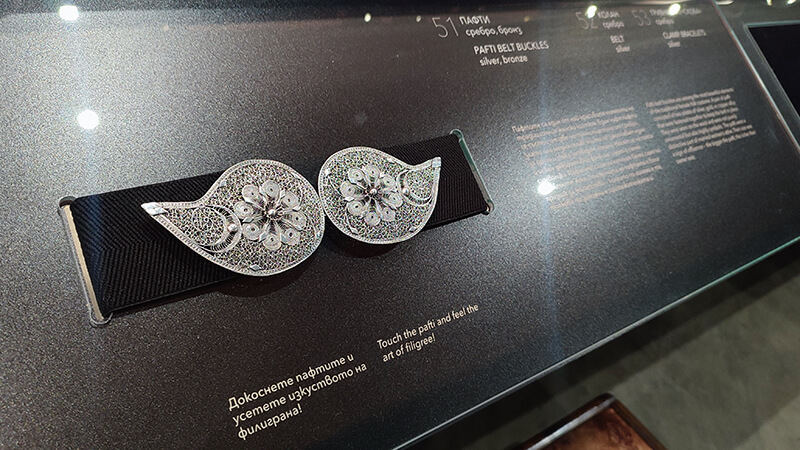
Accessibility is another key feature of the experiences designed by the studio. In Vratsa, for instance, the information panels can be read by anyone, regardless of height, and are wheelchair accessible. A step ladder is available for the youngest visitors.
Treasures of Vratsa was nearly two years in the making — as long as it takes to build a whole house, from blueprint to move-in day. Heritage work is more time-consuming and complex than most construction projects simply because there are no subcontractors in Bulgaria experienced in creating exhibition elements, the architects explain. On the plus side, the challenges make them more resourceful and expand their skill sets: in addition to being involved in the creation of exhibition content, they often have to make and test display elements, remake others, assemble showcases, and improvise when something goes wrong in the eleventh hour.
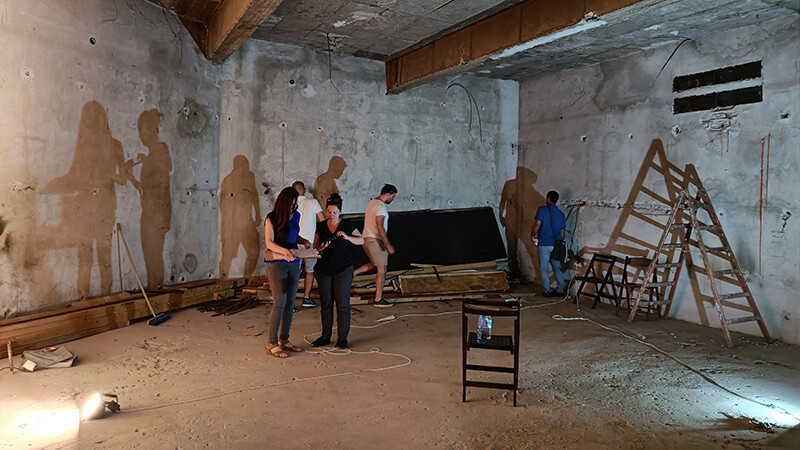
Their line of work is challenging but unconventional, and no two projects are alike, which is why they love what they do and wouldn’t go for anything else. Compared to conventional architectural projects, “the cultural layering and specific details make heritage conservation a much more enriching experience,” Desislava says.
Experiencing the results of their work as a visitor is just as enriching.
Why don’t you find out for yourselves?
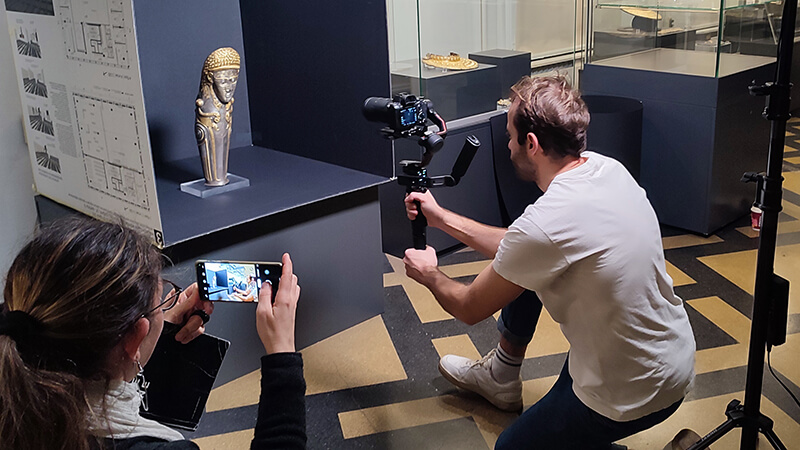
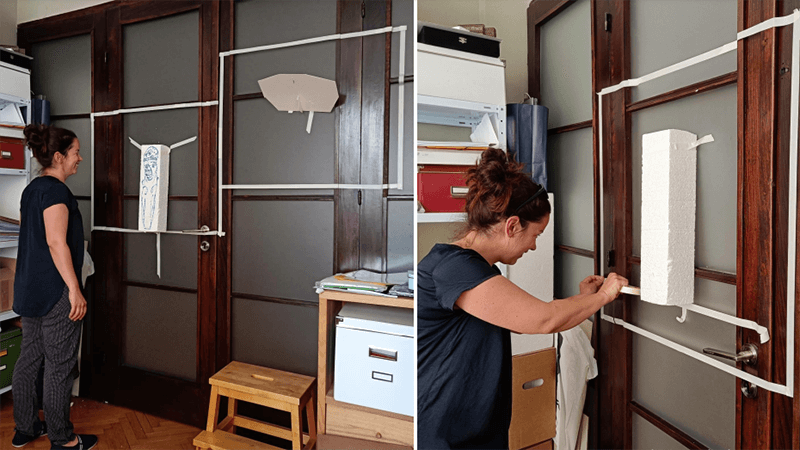
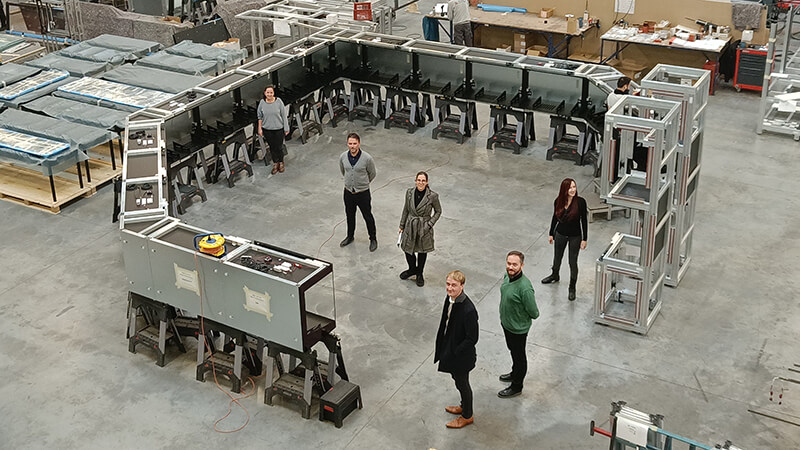
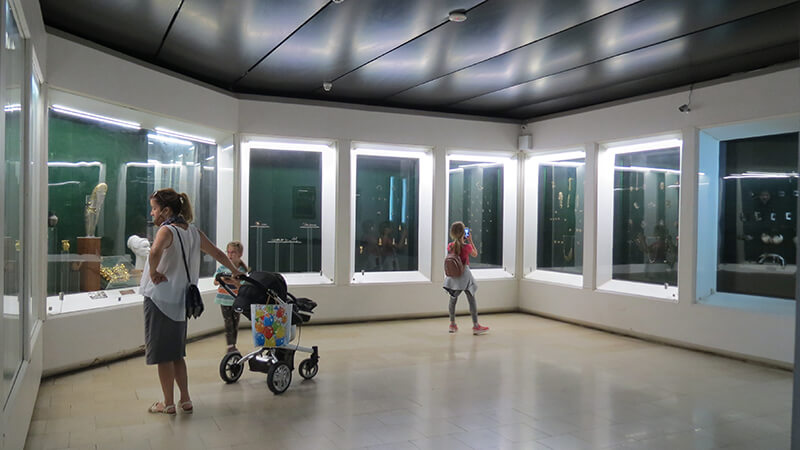
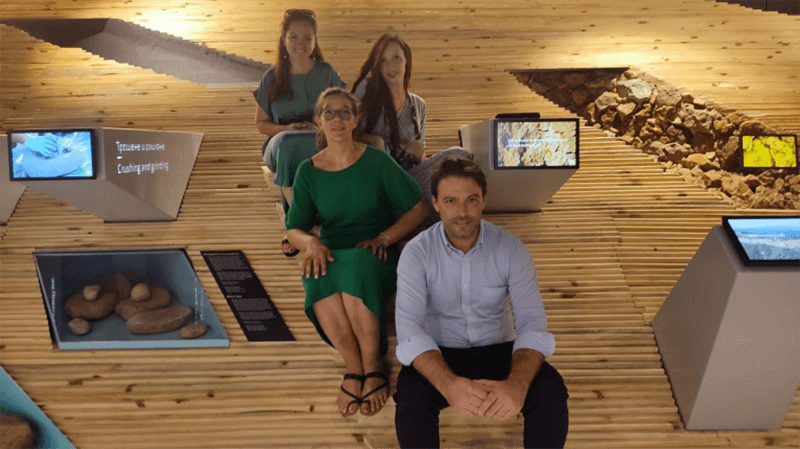
The America for Bulgaria Foundation supports Bulgaria’s cultural heritage and tourism development in the country through initiatives such as Muse Academy, the restoration of the Bishop’s Basilica of Philippopolis in Plovdiv, the participation of Thracian artifacts from Bulgaria in the First Kings of Europe exhibit at the Field Museum in Chicago, and many others.
